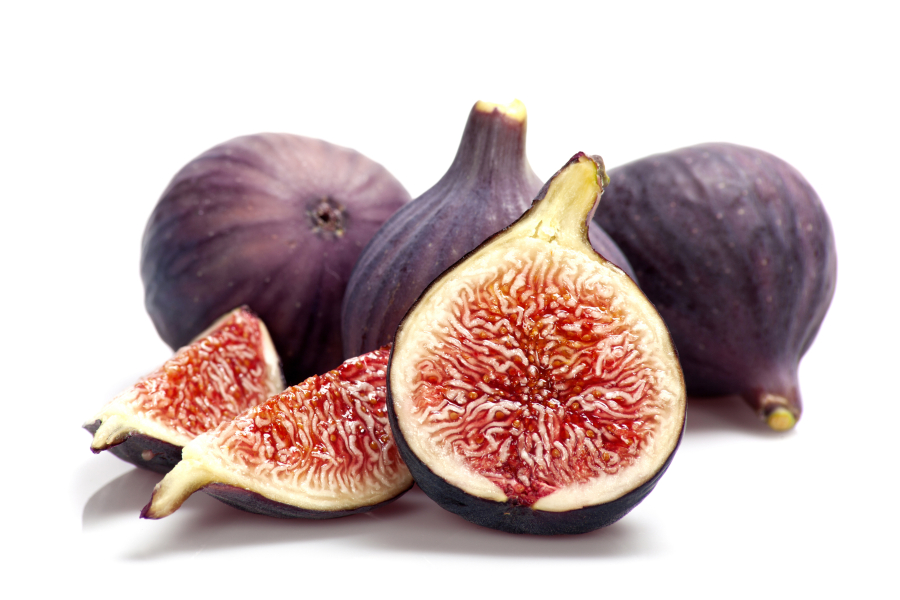If your only experience with figs is scarfing down a few fig bars, then you are in for a treat. There is nothing to equal the lush taste and texture of fresh figs. Fresh local figs are in season from August through October.
Figs grow on the ficus tree (Ficus carica), which is a member of the mulberry family. They are one of the first plants cultivated by humans.
First cultivated in Egypt, figs were held in high esteem by the Greeks, who made laws forbidding the export of the best figs. Also revered in ancient Rome, they were thought of as sacred. Mithradates the Great is credited with ordering his citizens to eat at least one fig per day to ward off disease. The early Olympians ate figs during training, and figs were presented as laurels to winners, becoming the first Olympic “medal.”
Some of the most popular varieties of figs are: Mission with blackish-purple skin and pink flesh, Kadota with green skin and purple inside, Calimyrna has yellow skin and amber flesh, Brown Turkey with purple skin and red interior, Celeste are purplish-brown and purple inside, and Adriatic, which has a light green skin and pinkish-tan flesh.
Figs are a good source of potassium, fiber, magnesium, manganese, calcium, copper, vitamins K and B6. They are a nutritious snack at about 40 calories per medium fruit.
Fresh figs are very perishable, and should be used within a few days. Look for figs that have a rich, deep color and are plump and tender, not mushy. They should have firm stems and be free of bruises with a mildly sweet fragrance. A sour smell is a sign of spoilage. Slightly under-ripe figs can be kept at room temperature for one to two days to finish ripening, but ripe figs should be stored in the refrigerator.
Before eating or cooking figs, rinse under cool water, remove the stem and pat dry.
The skin of the fig is edible, so it is not necessary to peel it. If you prefer to peel the figs before eating, start by twisting the stem off. Then gently use your fingers to peel away the skin from the exposed top. You can also simply cut the fruit in half and eat the interior flesh.
Fresh figs can be poached in water, juice or wine to make them juicier and served with yogurt, custard or ice cream. Toss slices on a salad or add to savory meat dishes for a Mediterranean twist. In baked items figs hold in moisture, and pureed figs can be used to replace fat.
Figs pair beautifully with tangy cheeses such as goat and blue cheese. Figs can be frozen, canned, made into jam or dehydrated.
Dried figs can be used so many ways — added to cereals (hot and cold), baked into breads, cakes and cookies, or as a healthy snack.
For additional recipes and serving suggestions, check out Chef Scotty’s Market Fresh Recipes at http://ext100.wsu.edu/clark/?p=8163.
Judi Seifert is a Clark County WSU Extension Master Food Preserver. For additional recipes, food preservation and food safety information visit http://ext100.wsu.edu/clark/?p=1134. Have questions? Call MFP Helpline: 360/397-6060 ext. 5366, or join Facebook Discussion Group “WSU Home Food Preservers – Clark County”.



